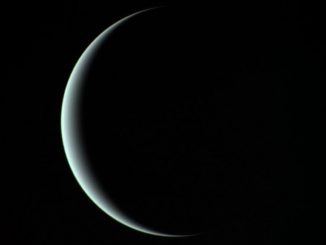
Ten billion years ago, two massive bodies, presumably neutron stars, spiralled into each other, merging in a cataclysmic blast that produced a short gamma ray burst, or SGRB. Such events generate enormous amounts of energy, in the blink of an eye, before quickly fading from view. As such, catching sight of the optical afterglow of an SGRB is difficult.
This time around, researchers alerted to the blast by a bulletin from NASA’s burst-hunting Swift space telescope were able to quickly aim the 8.1-metre Gemini North Telescope in Hawaii, capturing the faint afterglow of GRB181123B with the Gemini Multi-Object Spectrograph. Using additional data from W.M. Keck Observatory and the Multi-Mirror Telescope, the team was able to date the merger, concluding it is the second most distant SGRB afterglow ever detected.
“We took advantage of the unique rapid-response capabilities and exquisite sensitivity of Gemini North and its GMOS imager to obtain deep observations of the burst mere hours after its discovery,” said team-leader Kerry Paterson of the Center for Interdisciplinary Exploration and Research in Astrophysics at Northwestern University. “The Gemini images were very sharp, and allowed us to pinpoint the location to a specific galaxy.”
The observations, accepted for publication by The Astrophysical Journal, show the SGRB occurred when the universe was less than four billion years old, in the so-called “teenage years.” The study raises new questions about how long it takes massive stars to live out their lives, explode in supernova blasts and form binary neutron stars that eventually spiral into each other.
“This was a very exciting object to study,” said Paterson, a postdoctoral associate. “Our research now suggests neutron star mergers could occur surprisingly quickly for some systems — with neutron star binaries spiraling together in less than a billion years to create an SGRB.”



